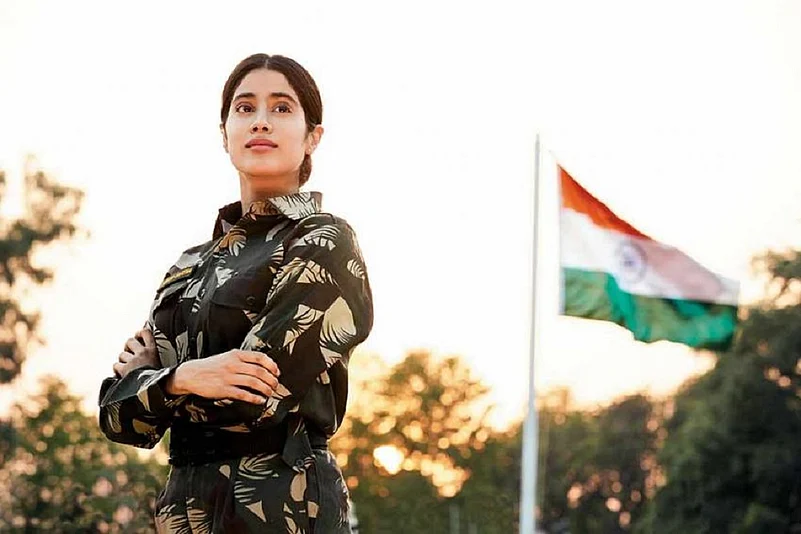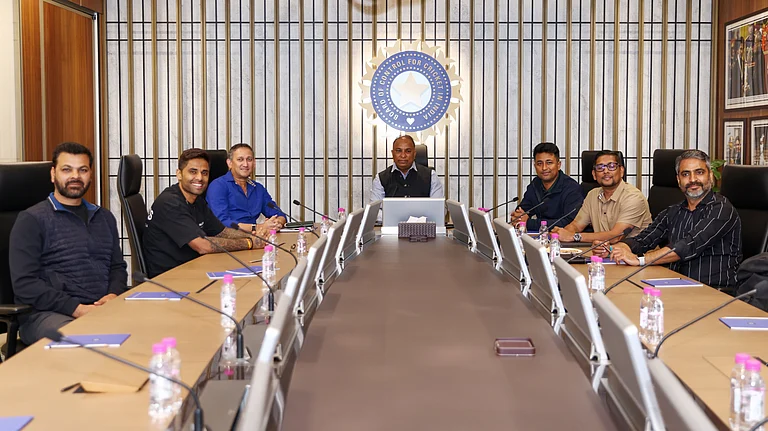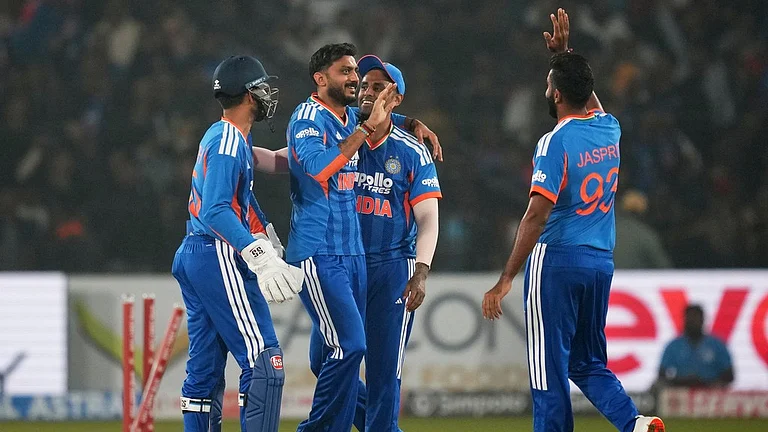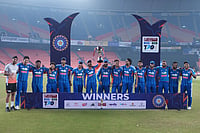After the recent release of ‘Gunjan Saxexna’, a controversy has erupted over the portrayal of Indian Air Force in the film. While the film has received praise for its performances, some contend that the movie is not factually correct and it wrongfully portrays the Indian Air Force as a very sexist institution. In an interview with Outlook’s Lachmi Deb Roy, Flt. Lt. Srividya Rajan rebukes another claim of the film and says that she was the first Indian woman pilot to fly to Kargil, not Gunjan Saxena. Edited excerpts:
Is ‘Gunjan Saxena: The Kargil Girl’ factually incorrect?
As claimed, it is a biopic of a lady officer in Indian Air Force, and it should have been factually correct. In the movie, it is shown that only one lady pilot was posted in Udhampur and she flew during the Kargil conflict, but this is factually incorrect. There were two lady pilots and I was the first lady pilot to fly in Kargil Operations. IAF and our male counterparts have also been portrayed in a negative light, which is again incorrect. They were helpful and accommodating. They never ill-treated us as shown in the film but instead, they had high regard and respect for us. It was also shown that she was not allowed to fly during her initial days citing petty reasons, which is again wrong. We didn't have to prove or demonstrate our physical strength. Climax of the film is also farfetched from the reality. My point is the movie should have inspired the girls, not scared them. Now, every parent will think twice before sending their daughters in the armed forces.
How is the whole reaction among your course mates after the release of the film?
Gunjan Saxena and I were course mates and we did our training together in Udhampur. We have a very good bond among the course mates and no matter what happens we always stand by each other. It’s a very thick bond and it has been like that even after our career in the forces ended. We regularly speak to each other and have a course group too.
Now, I haven’t spoken to everyone in the course about the film. But the general view is that it is not Gunjan that they have shown in the movie. Frankly, I don’t know this Gunjan (film). The Gunjan I know is a very strong person. But in the film, she has been portrayed as a week person. Nobody is happy about the movie because it is sending out a wrong message to the public. They have tarnished the image of the Indian Air Force. And the film also shows only Gunjan, my existence is not there at all.
Does misogyny exist in the armed forces?
No, misogyny doesn’t exist in the armed forces. Nobody hates women in the forces. Like it is there in every area of work, few people are doubtful and they are not very happy with the idea of women stepping into forces and sharing the space. It’s a male dominated area and especially flying which is a very niche area. There were initial doubts and apprehensions as to whether the women will be able to perform the task assigned to them. And it is a highly stressful job so the male colleagues had their doubts if we will be able to take the pressure or not. It was a hard posting too because Udhampur is an operational unit in Jammu and Kashmir. And the conditions are tough there. But after we started flying and proved our worth, the entire outlook of the male officers changed. They had utmost respect and regard for us. Gunjan and I had also gone ahead and done independent detachment as commanders. The male officers are friendly, but having said that, in every field there are exceptions and we too have encountered that.
All the male officers in the forces have been painted black in the film, what do you have to say about that?
That is the reason I came out and spoke. When I saw the movie, I really felt bad. The way it is shown that they are always rude to her and avoiding her and not allowing her to fly and even going to the extent of demonstrating their physical strength, that is completely incorrect. Once our training was completed, we were directly involved in all the operations. We flew in Himachal Pradesh, Punjab, and Kashmir. The Kargil war took place three years after our posting in Udhampur. So, by then we already had three years of flying experience and we had flown in high-altitude areas. There was no question over doubting our ability and whether to send a lady pilot to Kargil or not. All that was shown in the film was completely fictitious.
Being a lady officer, did you ever have to put in extra effort?
Initially, yes, we had to since at that time there were no women officers. And especially in our unit, we were the first one to fly. So they had no idea how to manage us because Srinagar is a highly volatile area. But once we had crossed the line and our training was done, the senior officers used to go out of their way to help us and they taught us everything. Without their guidance, we wouldn’t have been able to perform so well. Everything is not taught in the training institutes, some things are learned on the job. Professionally speaking, they treated us as equals. If someone makes a mistake, whether it is a male officer or a female officer, they will be treated in a similar manner. Most importantly, we are flying a machine and the machine doesn’t recognise the gender of the pilot. And there is no margin of error there. It is the job of the senior officers to make the pilot competent enough to handle the machine and they did the job to the best of their abilities.

























